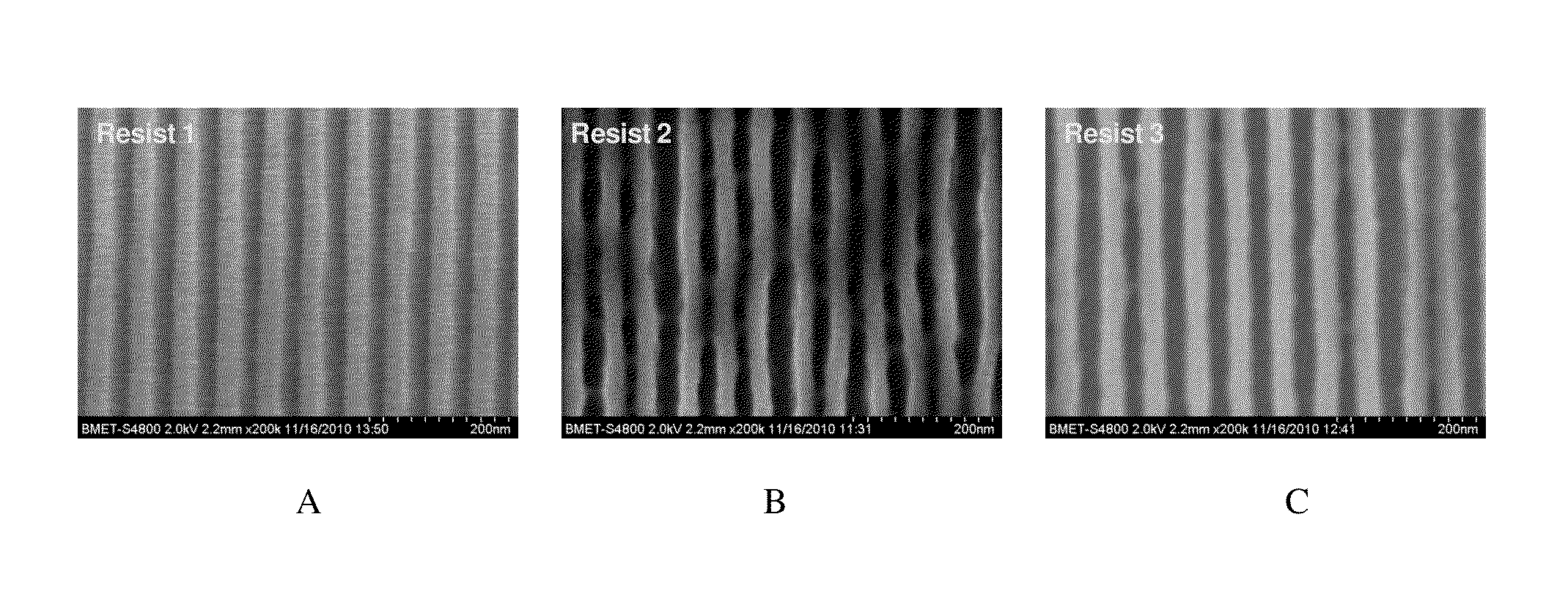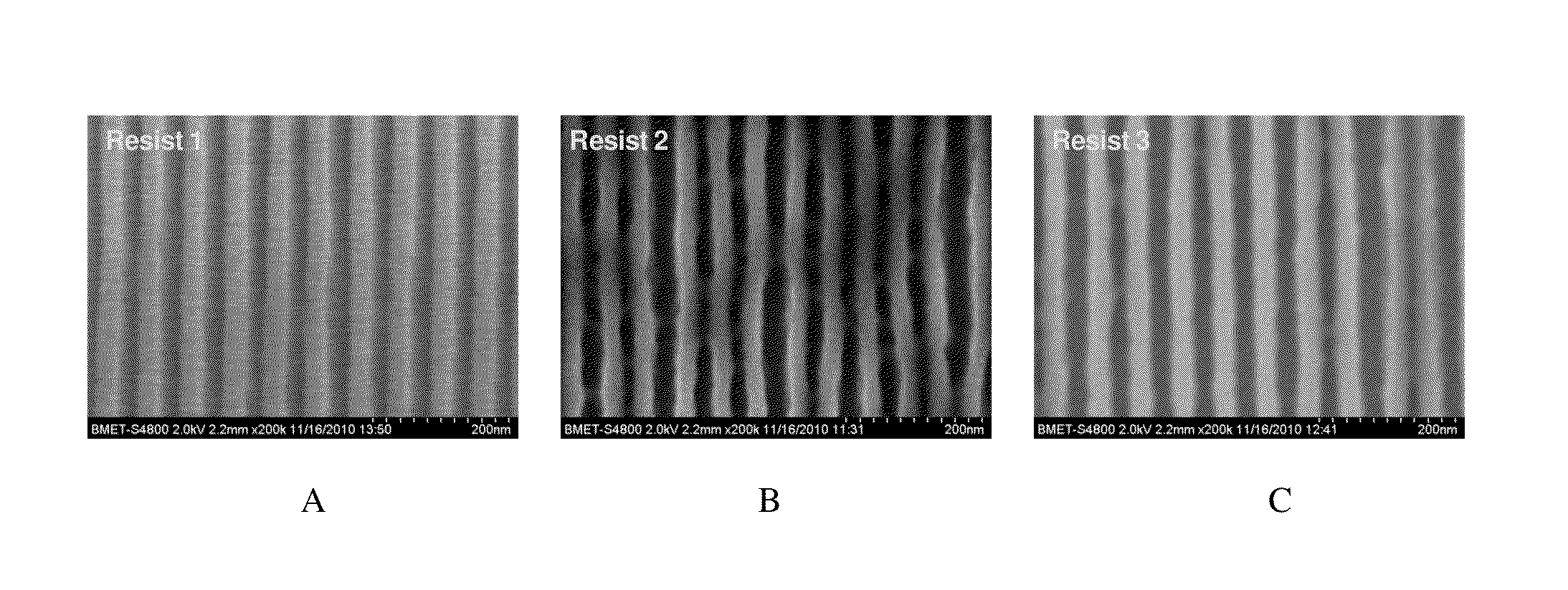Calixarene and photoresist composition comprising same
a technology of calixarene and composition, applied in the field of calixarene and photoresist composition comprising same, can solve the problems of poor etching, rough edges, and resolution that take on increasing significance, limiting the performance and usefulness of photoresists
- Summary
- Abstract
- Description
- Claims
- Application Information
AI Technical Summary
Benefits of technology
Problems solved by technology
Method used
Image
Examples
Embodiment Construction
[0011]Disclosed herein is a molecular glass compound useful for preparing photoresists. The molecular glass compounds are tetrameric calix[4]arenes having free hydroxy groups modified using acetal chemistry to include base-stable but acid-cleavable aromatic protecting groups.
[0012]Calix[4]arenes are discrete cyclic tetrameric compounds having an alternating structure derived from the reaction of a phenolic compound with an aldehyde. The core structure is preferably bowl-shaped tetrameric calix[4]arene formed from aromatic compounds having hydroxy groups and aldehydes preferably also having hydroxy groups, where some or all of the hydroxyl groups are reacted with aromatic vinyl ethers to form the adduct which is an acetal protection group. As used herein, “adduct” refers to the addition product of the vinyl ether with an aromatic hydroxy group unless otherwise specified. Calix[4]arenes exist in four different conformers: cis-cis-cis, cis-trans-cis, cis-cis-trans, and trans-trans-tran...
PUM
| Property | Measurement | Unit |
|---|---|---|
| wavelength | aaaaa | aaaaa |
| wavelength | aaaaa | aaaaa |
| wavelength | aaaaa | aaaaa |
Abstract
Description
Claims
Application Information
 Login to View More
Login to View More - R&D
- Intellectual Property
- Life Sciences
- Materials
- Tech Scout
- Unparalleled Data Quality
- Higher Quality Content
- 60% Fewer Hallucinations
Browse by: Latest US Patents, China's latest patents, Technical Efficacy Thesaurus, Application Domain, Technology Topic, Popular Technical Reports.
© 2025 PatSnap. All rights reserved.Legal|Privacy policy|Modern Slavery Act Transparency Statement|Sitemap|About US| Contact US: help@patsnap.com



